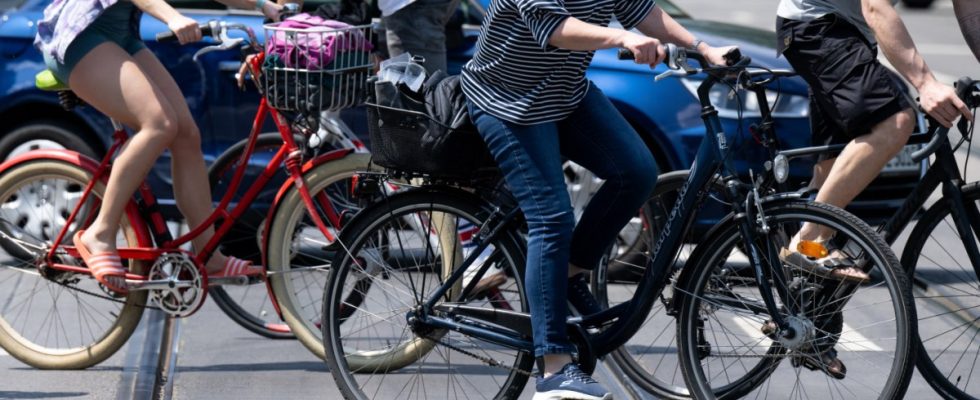Despite the increasing number of registrations, car traffic in Munich has decreased slightly. But more cyclists are on the road. The mobility department has now presented new figures on traffic development in the city for the second Munich Mobility Congress. Accordingly, car traffic has decreased by five percent, while cycling has increased by 30 percent. The information relates to the first half of 2023 compared to the first half of 2019. The mobility department wanted to avoid distorting effects from the time during the corona pandemic, when traffic had generally decreased drastically due to the lockdowns.
The volume of bicycle traffic is measured at six points in Munich with sensors under the asphalt surface: on Arnulfstraße near the main train station, on Birketweg near the Hirschgarten, on Bad-Kreuther-Straße in Berg am Laim, on Erhardtstraße by the Deutsches Museum, on Margaretenstraße at Harras and on the Rudolf-Harbig-Weg in the Olympic Park. Around 800 sensors record car traffic in the city area, 200 of which are on open roads such as the Mittlerer Ring, and the rest are installed at traffic light crossings.
The figures were presented on Sunday by Mayor Katrin Habenschaden (Greens). But there is no reason to celebrate, she said. “Because we are still a long way from our goals for the mobility mix.” Nevertheless, the development is encouraging. It shows that climate-friendly and space-saving means of transport are booming in Munich and that people are willing to change. “Our task now is to turn an initial trend into a long-term development. We achieve this in particular through a better range of public transport, safe cycle paths and footpaths, a massive expansion of car sharing – and well-done citizen participation.” The turnaround in traffic in Munich has the potential to be a success “if we continue to follow the path we have taken,” said habenharm.
Almost as many people are on the road again as before Corona
According to the mobility department, the number of passengers in public transport has almost reached the level of the time before Corona. But the high demand for public transport is both a blessing and a curse for the city, and that doesn’t just apply to Munich. Because for the traffic turnaround it is not enough to lower prices. Ingo Wortmann, head of the Munich Transport Company (MVG) and at the same time President of the Association of German Transport Companies, explained on Monday that one should not forget to expand the offer. And here the transport companies are missing the income due to the cheap Germany ticket, which is currently still available for 49 euros.
In terms of sales, the ticket is a success. According to Wortmann, eleven million subscriptions were sold throughout Germany. Around 46 percent of users switched from an existing subscription, around 44 percent were already public transport customers before, but without a subscription, eight percent used public transport almost never before (difference from 100 percent due to rounding). The federal and state governments are each providing 1.5 billion euros for this. Any additional costs will be borne by the federal government this year. But according to Wortmann, this so-called obligation to make additional payments will no longer exist in the next two years.
So who should pay for new vehicles, the expansion of the infrastructure and new staff in the driver’s cabs and workshops? This is a question that has not been resolved. For the whole of Germany, the so-called Municipal Transport Financing Act (GVFG) provides two billion euros per year for local transport throughout Germany. But according to Wortmann, the Munich Transport Association alone would need two billion annually by 2040 to adequately expand public transport in the interests of climate protection.
The municipalities alone cannot afford this financially. Even the projects in Munich are worth billions. For example, the extension of the U5 to Pasing costs almost a billion euros, the cost estimates for the possible U9 subway line range from four to over ten billion euros. The city has already decided to build the shell of a future underground station under the main train station and is spending around 663 million euros on construction and planning. Its funding is uncertain so far.
However, there would be enough money for the promotion of local public transport. The Federal Environment Agency lists on its home page environmentally harmful subsidies such as coal mining or the often mentioned company car privilege. In total, these subsidies amount to more than 65 billion euros annually. Transport companies have therefore been calling for a reallocation of funds for a long time.

